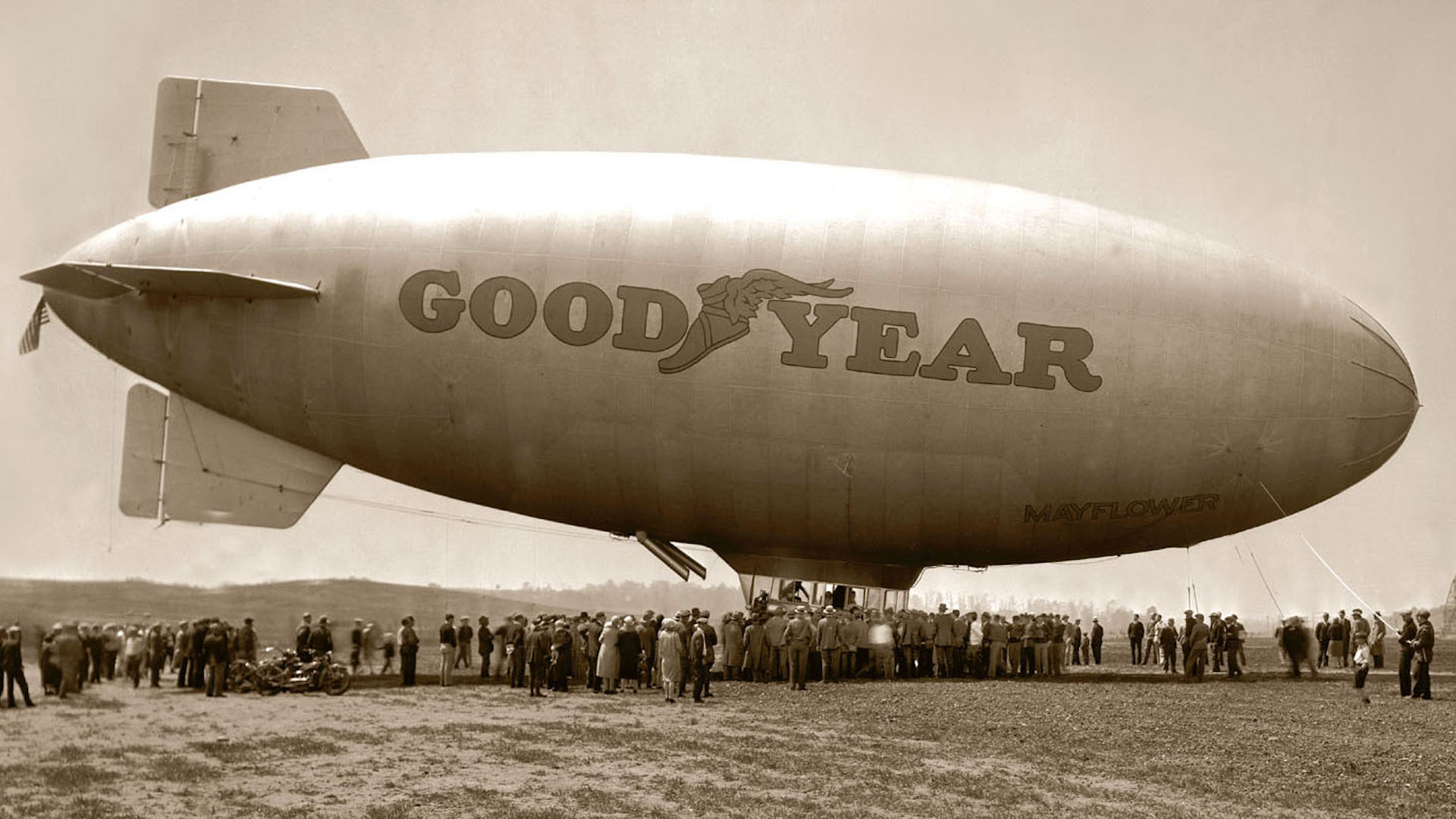

The Goodyear Blimp is up there with the Oscar Mayer Weinermobile (now Frankmobile) as the best-known promotional vehicles in America. Sure, they’re just moving billboards, but they’re also just straight-up unusual sights that’ll brighten up your day. For that, we have former Goodyear president Paul W. Litchfield to thank. He was a kind of a Zeppelin Guy™ who thought they’d become the yachts of the sky.
Born in 1875, Litchfield was just a young chemical engineer when he joined the nascent Goodyear at the end of the 1800s. He quickly rose through the company, becoming a plant superintendent in 1899, and buoying the business with his patented tubeless tires. With the rise of aviation, he conceived the first practical aircraft tire, leading Goodyear’s foray into aerospace (and eventually, tank tread landing gear). By 1912, the first Goodyear airship had taken to the skies.
Goodyear built on this success by delivering observation balloons and blimps for the U.S. military in World War I, setting itself up for an unexpected partnership after the war: Zeppelin. Yes, that Zeppelin. The two formed the Goodyear-Zeppelin Corporation (later Goodyear Aerospace) which produced its first Goodyear-branded blimp in 1925, christened “Pilgrim.”

It was an airship that Litchfield firmly believed would pave the way for blimps as “aerial yachts,” as quoted by the University of Pittsburgh. As he put it in a Goodyear-published book quoted by Airships.net, they’d “serve a similar purpose for persons living inland as do yachts for those living along the seacoast.”
The Pilgrim would be the first of many lighter-than-air vehicles Goodyear would produce, many of which would be based out of Akron, Ohio. Litchfield kept a mansion there, one stuffed to the gills with airship-themed decor according to “Giants in the Sky: A History of the Rigid Airship.” He’s like the aeronautical equivalent of an adult with a race car bed (I’m imagining a four-poster bed in the shape of an airship gondola.)


Goodyear manufactured a series of airships throughout the ’20s and ’30s, from the frameless Type AD commercial blimp to the military-aimed, rigid-framed Akron-class airship for the U.S. Navy. Though Zeppelin split from the company with the outbreak of World War II, Goodyear continued to supply the U.S. military with airships through the war. And when peace arrived at last, Goodyear repurposed numerous surplus airships, which it put back into marketing service.
Litchfield however would never see airships become the flying yachts he imagined they’d be; the upper class instead took to helicopters and private jets for airborne travel and recreation. Goodyear Aerospace itself would be sold off in 1987, then absorbed in 1993 by Lockheed, which doesn’t mass manufacture airships. It’s not hard to understand why: they’re tricky to maneuver, sensitive to weather changes, and rely on expensive or volatile gases to stay aloft. Their safety record from the perspective of accidents per airship-built speaks to how viable a form of transport they are.

A century after “Pilgrim” made its pilgrimage to the sky, airships are little more than a novel anachronism to us. Litchfield’s proclivity for flying up, up, and away in a beautiful balloon could never be a viable business—but it did embed the Goodyear Blimp (and thereby the Goodyear name) in the U.S.’s collective consciousness. To this day, a revitalized Zeppelin company still builds Goodyear’s lighter-than-air marketing machines. If that ain’t a successful partnership and ad campaign, I don’t know what is.
Got a tip or question for the author? You can reach them here: james@thedrive.com